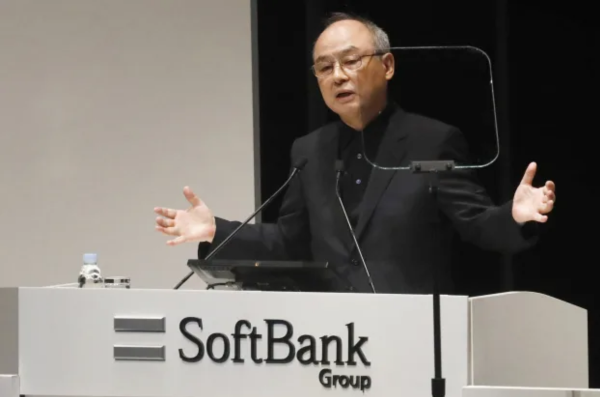SoftBank founder Masayoshi Son has suffered a major financial loss as the company’s stock price plunged nearly 19% in a single day, wiping out billions of dollars of his fortune. The sharp decline is part of a broader downturn that began late last week after the Bank of Japan raised interest rates, sending shockwaves through the Japanese stock market. The fallout from the financial turmoil has raised growing concerns about the bank’s future, particularly regarding its investment strategies and market positioning. Analysts are also questioning whether Son’s bank’s heavy reliance on high-risk technology investments can sustain the company’s long-term growth amid tighter monetary policies and economic uncertainty.
SoftBank’s Vision Fund is struggling
The Vision Fund, the bank’s flagship investment vehicle, has been hit particularly hard in the wake of global financial turmoil. This has led to a significant drop in valuations for technology startups, which are a key part of the Vision Fund’s portfolio. Rising interest rates have led to a reduction in startup funding and a decline in the market value of many of the bank’s investments. Notable losses include companies like SenseTime and GoTo, which were once considered high-potential investments but have since struggled due to changing market dynamics. As a result, the bank has had to rethink its investment strategy, focusing more on sustainable growth rather than high-risk, high-reward opportunities.
One of the biggest challenges SoftBank faces is the balancing act between aggressive investments and risk mitigation. In the past, SoftBank was known for its bold moves, investing billions in startups with the hope of exponential returns. However, given the current economic climate, it has become increasingly difficult to justify these high-stakes investments without clear profitability timelines.
Broader Challenges Amid Rising Interest Rates
In recent months, SoftBank has found itself grappling with the challenges posed by rising interest rates. These have not only dampened the market for startup funding but have also negatively impacted the market values of its key investments. This financial hit is part of a broader trend, with SoftBank attempting to move into “defense mode” by reducing riskier investments. Despite these efforts, the company continues to suffer from the fallout of a volatile market.
Higher interest rates mean that borrowing costs increase, making it harder for SoftBank-backed startups to secure funding for expansion and operations. This, in turn, leads to slower growth and lower valuations, directly impacting the Vision Fund’s performance. Moreover, with the global economy facing uncertainty, investors are becoming more cautious, shifting their focus to safer, more stable assets rather than speculative tech ventures.
Vision Fund’s Worst-Ever Loss
SoftBank recently reported its worst-ever loss for the Vision Fund, totaling a staggering $32 billion. This was a major blow for Masayoshi Son, who had built his reputation on the ability to identify and capitalize on lucrative investment opportunities. The Vision Fund’s losses underscore the challenges SoftBank faces in navigating a rapidly changing financial landscape.
Despite these setbacks, SoftBank remains focused on future investments, particularly in sectors like artificial intelligence (AI), which it believes will be essential for its recovery in the long run. AI has been a major area of interest for Masayoshi Son, who has long predicted its transformative impact on industries ranging from healthcare to finance.
However, the road to recovery will not be easy. Many analysts argue that SoftBank’s reliance on high-growth, high-risk investments has left it vulnerable to market downturns. The company’s ability to pivot toward more stable and diversified investments will be critical in determining its long-term success.
SoftBank’s Market Decline and the Nikkei 225
The Nikkei 225 index was significantly affected by the market turbulence, recording a 12.4% drop—its worst performance since the infamous “Black Monday” crash of 1987. Prior to these recent events, SoftBank shares had been on a strong upward trajectory for over a year, largely driven by the recovery of its Vision Fund and a substantial rise in the stock price of Arm, a British chip design company in which SoftBank owns approximately 90%.
The decline in SoftBank’s stock price has had a ripple effect across global markets, with investors closely watching how the company will respond to the financial downturn. Given SoftBank’s significant influence in the tech investment space, its struggles could have broader implications for venture capital funding and startup valuations worldwide.
The Impact of Arm’s Success and SoftBank’s Loss
Arm’s success, bolstered by its role in the booming semiconductor industry and the growing demand for chips in mobile devices, automotive technology, and AI applications, had been a key factor in SoftBank’s positive performance. However, the sharp decline on Monday left SoftBank shares with only a 1.7% gain year-to-date.
As of Wednesday, SoftBank’s market value had dropped by roughly $28.3 billion, according to CNBC estimates, raising concerns about the future of the company. The semiconductor industry remains a crucial part of SoftBank’s portfolio, but market volatility has made it difficult to maintain consistent growth.
Moreover, competition in the chip sector is intensifying, with major players like NVIDIA and AMD continuing to innovate at a rapid pace. If SoftBank wants to maintain its edge, it will need to ensure that Arm remains at the forefront of technological advancements and secures strategic partnerships to enhance its market position.
Awaiting SoftBank’s Fiscal First-Quarter Results
SoftBank’s fiscal first-quarter financial results are set to be released next Wednesday. Investors are eagerly awaiting any signs of a recovery within the Vision Fund, which has struggled in recent quarters due to market fluctuations and underperforming investments.
In June, Masayoshi Son made a rare public appearance, outlining his vision for artificial intelligence’s future. Son has been particularly optimistic about AI’s potential, claiming that it could become 10,000 times more intelligent than humans. However, critics remain skeptical about how these ambitious forecasts will translate into tangible results, particularly given SoftBank’s recent financial struggles.
SoftBank has announced plans to raise additional capital through asset sales and restructuring efforts to shore up its balance sheet. Some analysts believe that the company might consider divesting non-core assets to generate liquidity and stabilize its financial position. However, given the complexity of SoftBank’s investment portfolio, executing these strategies effectively will require careful planning and execution.
The Road Ahead for SoftBank
Despite its current financial challenges, the bank remains one of the most influential players in the global technology investment landscape. The company’s long-term success will depend on its ability to adapt to changing market conditions, effectively manage risk, and identify high-growth opportunities that align with future technology trends.
As SoftBank navigates this period of financial uncertainty, investors will be watching closely to see whether Masayoshi Son can lead the company back to profitability. The coming months will be crucial in determining the company’s trajectory, with key developments expected in AI, semiconductor technology, and strategic partnerships.
For now, Masayoshi Son’s bank finds itself at a crossroads, with significant challenges ahead but also opportunities for reinvention. Whether the company can successfully weather this storm and emerge stronger remains to be seen, but one thing is certain: the financial world will be paying close attention to every move the bank makes in the coming months.



